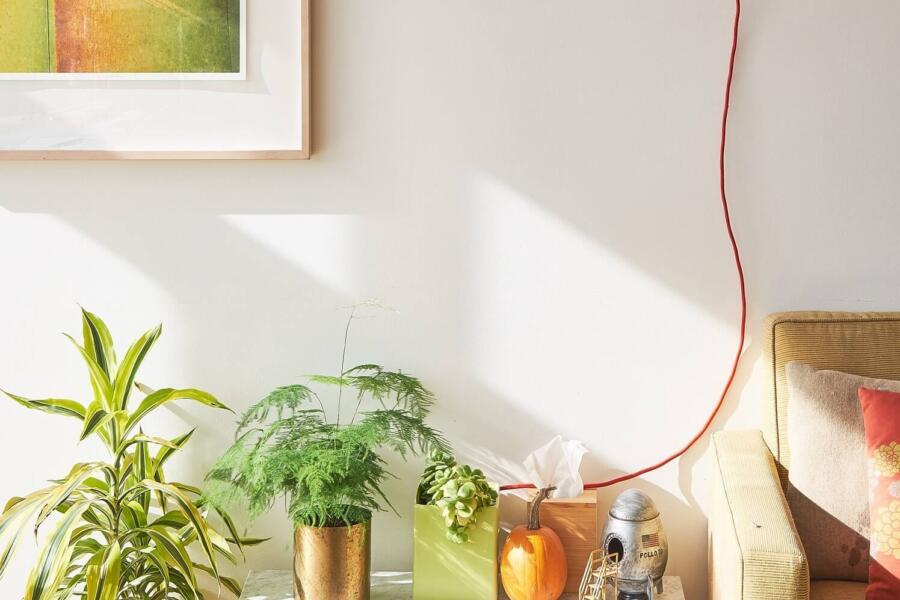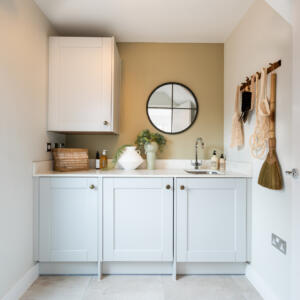
Light is the most valuable commodity for a home – not only does it highlight interiors and signify focal points, but it also affects our mood, productivity, and health. While artificial light sources have their role to play in altering ambience and attention, harnessing natural light in your home can have dramatic benefits on aesthetic, state of mind, and physical well-being. We’ve looked at some of the best ways you can maximise the effects of sunlight that enters your home.
Add reflective surfaces
Duplicating the sunlight that enters a window through use of reflective surfaces is one of the most effective ways to boost natural light in a property. An obvious start here is mirrors – a large statement mirror opposite a window will redirect light throughout the room and brighten up a space. It can be useful to alter the angle of a mirror to see where it best catches sunlight, as well as identify any darker areas of the room that could do with guided light. For fire safety reasons however, never place magnifying mirrors or other glass ornaments in direct sunlight.
Other reflective surfaces and materials can have the same effect. Consider a polished wooden table to brighten up a living or dining room, or a gloss kitchen splashback.
Consider your furnishings
The colours, materials, and placement of furniture and fittings can have a remarkable impact on the presence of natural light in the home. A useful exercise is to observe where sunlight naturally falls in the house throughout the day and build that into your interior design – ensure not to block light with large pieces.
Additionally, choose the arrangement of your furniture based on where you want the sunlight to fall when you will typically use that spot. Positioning a reading nook in an area that will get sunlight when you read not only maximises your own exposure to sunlight, but also provides a natural reading light.
Be mindful of curtains in rooms where you are looking to extend natural light. Heavier, darker curtains absorb sunlight as it enters the room – even if the curtains are open. Trying softer tones, or lighter materials such as linen or nylon net will allow light to pass through more easily.
Decorate with light in mind
The power of reflection can also be utilised in the paint or pattern used on the walls and ceilings. Darker colours on the walls absorb more light in the same way that darker curtains do – light matte paint is effective for reflection. Having lighter ceilings can also help to make the room brighter, although a white ceiling in a room with decorated walls can feel abrupt – try painting the ceiling a few shades lighter than the walls instead.
Keeping surfaces clean is also an excellent way to make light go further. Clean windows, mirrors, walls, and surfaces will do wonders for reflection and help to optimise light re-distribution.
How to think bigger
There are several larger scale jobs that can be of monumental benefit to homes in need of increased natural light. These, of course, are entirely dependent on opportunity and budget. Skylights are an excellent way of adding light and can be placed strategically to work in tandem with existing windows. Sun tunnels can be a more cost-effective option and offer unique solutions to circumstances where skylight installation isn’t an option.
The use of glass internal doors can help the flow of sunlight throughout a home, especially in a terraced property where the central rooms struggle for natural light. The same can be said for the front door – nothing looks quite so welcoming as sunlight spilling into a property from its entrance.
Share
Topics
Tips & Tricks Tips & TricksYou might also like
-

From exchange to EPC rating: We explain the most confusing house buying terminology
-

Balcony styling ideas from interior designers to get you excited for summer
-

5 steps to quickly get on top of an untidy house
-

Five tips on finding a work-life balance when working from home
-

The questions to ask when finding your ‘forever home’




